Medieval Magic – A Service Industry Used By Rich And Poor Alike
AncientPages.com - Chances are that when you hear the words “medieval magic”, the image of a witch will spring to mind: wizened old crones huddled over a cauldron containing unspeakable ingredients such as eye of newt. Or you might think of people brutally prosecuted by overzealous priests. But this picture is inaccurate.
The Sorceress by John William Waterhouse. Credit: Public Domain
To begin with, fear of witchcraft – selling one’s soul to demons to inflict harm on others – was more of an early modern phenomenon than a medieval one, only beginning to take hold in Europe at the tail end of the 15th century. This vision also clouds from view the other magical practices in pre-modern England.
Magic is a universal phenomenon. Every society in every age has carried some system of belief and in every society there have been those who claim the ability to harness or manipulate the supernatural powers behind it. Even today, magic subtly pervades our lives – some of us have charms we wear to exams or interviews and others nod at lone magpies to ward off bad luck. Iceland has a government-recognised elf-whisperer, who claims the ability to see, speak to, and negotiate with the supernatural creatures still believed to live in Iceland’s landscape.
While today we might write this off as an overactive imagination or the stuff of fantasy, in the medieval period magic was widely accepted to be very real. A spell or charm could change a person’s life: sometimes for the worse, as with curses – but equally, if not more often, for the better.
See also:
Eugenio De Torralba – Renaissance Magician’s Dangerous Spirit Communications
Paracelsus: Physician, Alchemist, Philosopher Well Ahead Of His Time
Phurba Dagger: Magical Weapon That Restrains Evil And Harmful Occult Forces
Magic was understood to be capable of doing a range of things, from the marvellous to the surprisingly mundane. At the mundane end, magic spells were in many ways little more than a tool. They were used to find lost objects, inspire love, predict the future, heal illnesses and discover buried treasure. In this way, magic provided solutions to everyday problems, especially problems that could not be solved through other means.
Crime of conjuring
This all may sound far-fetched: magic was against the law – and surely most people would neither tolerate nor believe in it? The answer is no on both counts. Magic did not become a secular crime until the Act against Witchcraft and Conjurations in 1542. Before then it was only counted as a moral misdemeanour and was policed by the church. And, unless magic was used to cause harm – for example, attempted murder (see below) – the church was not especially concerned. Often it was simply treated as a form of superstition. As the church did not have the authority to mete out corporal punishments, magic was normally punished by fines or, in extreme cases, public penance and a stint in the pillory.
This might sound totalitarian today, but these punishments were far lighter than those wielded by secular courts, where maiming and execution were an option even for minor crimes. Magic, then, was placed low on the list of priorities for law enforcers, meaning that it could be practised relatively freely – if with a degree of caution.
Among the hundreds of cases of magic use preserved in England’s ecclesiastical court records, there are a number of testimonials claiming that the spells were effective. In 1375, the magician John Chestre boasted that he had recovered £15 for a man from “Garlickhithe” (an unknown location – possibly a street in outer London).
Magic circle, from a 15th-century manuscript. Kieckhefer, Richard (1989). Magic in the Middle Ages. Cambridge: Cambridge University Press.
Meanwhile Agnes Hancock claimed she could heal people by blessing their clothes or, if her patient was a child, consulting with fairies (she does not explain why fairies would be more inclined to help children). Though the courts disapproved – she was ordered to stop her spells or risk being charged with heresy, which was a capital offence – Agnes’ testimony shows that her patients were normally satisfied. As far as we know, she did not appear before the courts again.
Magic by royal patent
Young and old, rich and poor alike used magic. Far from being the preserve of the lower classes, it was commissioned by some very powerful people: sometimes even by the royal family. In a defamation case from 1390, Duke Edmund de Langley – the son of Edward III and uncle to Richard II – is recorded as having paid a magician to help him locate some stolen silver dishes.
Meanwhile, Alice Perrers – mistress to Edward III in the late 14th century – was widely rumoured to have employed a friar to cast love spells on the king. Though Alice was a divisive character, the use of love magic – like using it to find stolen goods – was probably not surprising. Eleanor Cobham, duchess of Gloucester, also famously employed a cunning woman to perform love magic in 1440-41, in this case, to help conceive a child. Eleanor’s use of magic got out of hand, however, when she was accused of also using it to plot Henry VI’s death.
In many ways magic was just a part of everyday life: perhaps not something that one would openly admit to using – after all, it was officially seen as immoral – but still treated as something of an open secret. A bit like drug use today, magic was common enough for people to know where to find it, and its use was silently recognised despite being frowned upon.
Magic became a secular crime in 1542. Credit: Public Domain
As for the people who sold magic – often termed as “cunning folk”, though I prefer “service magicians” – they treated their knowledge and skill as a commodity. They knew its value, understood their clients’ expectations and inhabited a marginal space between being tolerated out of necessity and shunned for what they sold.
As the medieval period faded into the early modern, belief in diabolical witchcraft grew and a stronger line was taken against magic – both by the courts and in contemporary culture. Its use remained widespread, though, and still survives in society today.
Written by Tabitha Stanmore - PhD Researcher, Early Modern Studies, Department of History, University of Bristol
This article is republished from The Conversation under a Creative Commons license. Read the original article.
More From Ancient Pages
-
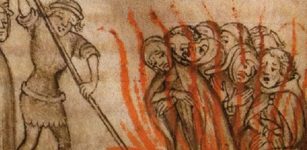 On This Day In History: Knights Templar Arrested – Oct 13, 1307
News | Oct 13, 2015
On This Day In History: Knights Templar Arrested – Oct 13, 1307
News | Oct 13, 2015 -
 Startling Discovery Of Nubian Levallois Technology In Shukbah Cave Re-Writes Ancient History Of Neanderthals And Homo Sapiens
Archaeology | Feb 24, 2021
Startling Discovery Of Nubian Levallois Technology In Shukbah Cave Re-Writes Ancient History Of Neanderthals And Homo Sapiens
Archaeology | Feb 24, 2021 -
 Stunning Facial Reconstruction Of Saint Ludmila’s Sons Of The Czech Royal Premyslid Dynasty
Archaeology | Mar 8, 2021
Stunning Facial Reconstruction Of Saint Ludmila’s Sons Of The Czech Royal Premyslid Dynasty
Archaeology | Mar 8, 2021 -
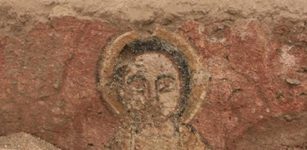 1,000-Year-Old Paintings Unearthed In Sudan – Documented By The Polish Researcher
Archaeology | Sep 25, 2022
1,000-Year-Old Paintings Unearthed In Sudan – Documented By The Polish Researcher
Archaeology | Sep 25, 2022 -
 On This Day In History: Powerful And Controversial Roman Emperor Frederick II Excommunicated – On Sep 29, 1227
News | Sep 29, 2016
On This Day In History: Powerful And Controversial Roman Emperor Frederick II Excommunicated – On Sep 29, 1227
News | Sep 29, 2016 -
 Unique Ancient Half-Mummy Unearthed In Luxor, Egypt Mystifies Archaeologists
Archaeology | Jun 6, 2022
Unique Ancient Half-Mummy Unearthed In Luxor, Egypt Mystifies Archaeologists
Archaeology | Jun 6, 2022 -
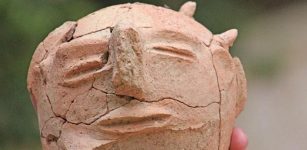 A Head Of A Statue Dated To 700 BC, Animal Figurines And Jordan Valley’s Occupation History
Archaeology | Sep 1, 2018
A Head Of A Statue Dated To 700 BC, Animal Figurines And Jordan Valley’s Occupation History
Archaeology | Sep 1, 2018 -
 Rare Bes Mugs Reveal Ancient Egyptians Drank Hallucinogenic Cocktails During Rituals
Archaeology | Nov 18, 2024
Rare Bes Mugs Reveal Ancient Egyptians Drank Hallucinogenic Cocktails During Rituals
Archaeology | Nov 18, 2024 -
 Unsolved Mystery Of The Aleppo Codex And Its Missing Pages: One Of The World’s Most Precious Ancient Books
Ancient Mysteries | Feb 27, 2017
Unsolved Mystery Of The Aleppo Codex And Its Missing Pages: One Of The World’s Most Precious Ancient Books
Ancient Mysteries | Feb 27, 2017 -
 Unexplained Phenomena Reported Around Mysterious Scandinavian Mountain
Featured Stories | Mar 16, 2025
Unexplained Phenomena Reported Around Mysterious Scandinavian Mountain
Featured Stories | Mar 16, 2025 -
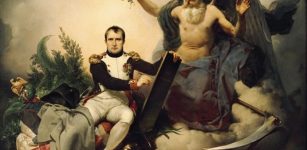 Napoleonic Code: Why Was One Of The Most Influential Civil Codes Flawed?
Ancient History Facts | May 16, 2020
Napoleonic Code: Why Was One Of The Most Influential Civil Codes Flawed?
Ancient History Facts | May 16, 2020 -
 Early Humans In Europe Were Making Fires At Least 250,000 Years Ago – New Study
Archaeology | May 18, 2023
Early Humans In Europe Were Making Fires At Least 250,000 Years Ago – New Study
Archaeology | May 18, 2023 -
 Impressive Huge Ancient Lamassu Statue Unearthed In Nineveh, Iraq
Archaeology | Oct 28, 2023
Impressive Huge Ancient Lamassu Statue Unearthed In Nineveh, Iraq
Archaeology | Oct 28, 2023 -
 Strange Ancient Artifacts And Foreigners Who Were Not Meant To Be In North America
Ancient Mysteries | Mar 16, 2020
Strange Ancient Artifacts And Foreigners Who Were Not Meant To Be In North America
Ancient Mysteries | Mar 16, 2020 -
 City Of Ephesus And Celsus Library With More Than 12,000 Scrolls
Featured Stories | Sep 17, 2015
City Of Ephesus And Celsus Library With More Than 12,000 Scrolls
Featured Stories | Sep 17, 2015 -
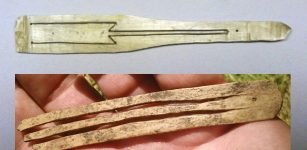 Jew’s Harps: Old Musical Instruments Discovered In Altai Mountains
Archaeology | Jan 9, 2018
Jew’s Harps: Old Musical Instruments Discovered In Altai Mountains
Archaeology | Jan 9, 2018 -
 Ask And Embla: First Human Pair Created By Powerful God Odin And His Two Brothers
Featured Stories | Sep 24, 2016
Ask And Embla: First Human Pair Created By Powerful God Odin And His Two Brothers
Featured Stories | Sep 24, 2016 -
 10 Ancient Shipwrecks And Several Underwater Artifacts Found Around The Island Of Kasos
Archaeology | Mar 14, 2024
10 Ancient Shipwrecks And Several Underwater Artifacts Found Around The Island Of Kasos
Archaeology | Mar 14, 2024 -
 Sunduki – ‘Home Of The Gods’ – One Of The World’s Oldest Astronomical Observatories
Civilizations | Oct 4, 2015
Sunduki – ‘Home Of The Gods’ – One Of The World’s Oldest Astronomical Observatories
Civilizations | Oct 4, 2015 -
 Resourceful Pre-Hispanic Society In Bolivia Had Flourishing Agriculture Despite Harsh Environment Of The Andes
Archaeology | Dec 24, 2017
Resourceful Pre-Hispanic Society In Bolivia Had Flourishing Agriculture Despite Harsh Environment Of The Andes
Archaeology | Dec 24, 2017



